Complete Guide to Alopecia - Types, Diganosis and Treatment Options
What is Alopecia
Alopecia is the medical term for hair loss. Hair loss may occur naturally, or it may be related to a disease or the use of certain medications. Symptoms of alopecia vary depending on the cause of the condition and range from a small bald patch to a complete loss of all body hair.
Alopecia, commonly known as hair loss, is a medical condition characterised by the partial or complete loss of hair from the scalp or other areas of the body. It can affect individuals of all ages and genders, leading to various emotional and psychological challenges.
There are several types of alopecia, with the most common being Androgenetic Alopecia (male and female pattern baldness), caused by genetic and hormonal factors. Other forms include Alopecia Areata, an autoimmune disorder resulting in round, coin-sized patches of hair loss, and Telogen Effluvium, often triggered by stress or illness, causing excessive shedding.
Management and treatment options for alopecia vary, including medications, hair transplantation, and supportive hair loss treatments, depending on the underlying cause and severity of hair loss. Understanding the specific type of alopecia and seeking appropriate medical advice is crucial for effective management and potentially restoring one's confidence and self-esteem.
Norwood Scale
The Norwood scale (or Hamilton-Norwood scale) is a commonly used classification system used to measure the extent of male pattern baldness and ranges from stages 1 to 7. It provides easy-to-reference images that indicate different stages of balding.

Norwood-Hamilton Scale of Male Pattern Baldness
Ludwig Scale
The Ludwig scale is a method of classifying female pattern baldness (Androgenic Alopecia) and ranges from stages 1 to 3.

Ludwig Scale of Female Pattern Baldness
Understanding Hair Growth and Loss
Understanding the intricacies of hair growth and loss is crucial for managing hair-related issues effectively. The hair growth cycle consists of three phases:
A. Normal Hair Growth Cycle:
- Anagen Phase: This is the active growth phase, lasting anywhere from 2 to 7 years. On average, scalp hair grows about 1 cm per month during this phase. About 80-90% of your hair is typically in the anagen phase.
- Catagen Phase: This transitional phase follows the anagen phase and lasts for about 2-3 weeks. During this period, hair growth slows down, and the hair follicle shrinks.
- Telogen Phase: Also known as the resting phase, this lasts for approximately 3 months. Around 10-15% of your hair is in this phase at any given time. Hair is shed and replaced during the telogen phase, with new hair emerging as the old one falls out.
B. Factors Influencing Hair Growth:
- Genetics: Your genetic makeup plays a significant role in determining your hair growth patterns. A family history of hair loss can increase your susceptibility.
- Hormonal Factors: Hormones, particularly androgens like testosterone, can influence hair growth. Conditions like polycystic ovary syndrome (PCOS) or hormonal fluctuations can lead to hair thinning.
- Age: Hair growth tends to slow as we age. By the age of 50, about 50% of men and women will experience some degree of hair loss.
- Health Conditions: Certain medical conditions, such as thyroid disorders, anaemia, and autoimmune diseases, can impact hair growth. In India, an estimated 20% of the population suffers from iron-deficiency anaemia, which can lead to hair loss.
- Environmental Factors: Pollution, exposure to harsh sunlight, and poor nutrition can contribute to hair problems. In India, where air pollution is a growing concern, it's important to protect your hair from environmental damage.
Understanding these aspects of hair growth and loss is pivotal in maintaining healthy locks. If you're concerned about hair loss, it's advisable to consult a dermatologist who can provide personalized guidance and treatment options. Early intervention can make a significant difference in preserving your hair's health and vitality.
Types of Alopecia
Androgenetic Alopecia:
This is a prevalent disorder that affects approximately 50% of men and many women (mostly older than 40 years). As many as 13% of premenopausal women reportedly have some evidence of Androgenetic Alopecia. This type of alopecia is commonly known as male pattern baldness or female pattern baldness. Thinning of hair occurs on the crown area, or hairline starts receding from the temples.
In most cases, hair continues to fall, leading to complete baldness with time. This progressive hair loss is believed to be due to genetic and hereditary factors.
Androgenetic alopecia, commonly known as male or female pattern baldness, is the most prevalent form of hair loss and is influenced by genetic, hormonal, and environmental factors.
Causes of Androgenetic Alopecia
- Genetics: A family history of androgenetic alopecia plays a pivotal role. It is often inherited in an autosomal dominant manner, meaning if a parent has it, there's a greater likelihood of developing it.
- Hormonal Influence: The hormone dihydrotestosterone (DHT), derived from testosterone, has a major impact. In individuals with a genetic predisposition, DHT can shrink hair follicles, leading to thinner, shorter hair growth cycles.
- Age: The condition tends to become more prevalent with age, as hormonal fluctuations and genetic factors increasingly affect hair follicles.
Risk Factors:
- Gender: While both men and women can experience androgenetic alopecia, it is more commonly associated with men.
- Hormonal Changes: Hormonal fluctuations due to pregnancy, menopause, or certain medical conditions can exacerbate hair loss in women.
- Medications: Some medications, such as anabolic steroids and certain blood pressure drugs, can contribute to hair loss.
- Lifestyle Factors: Smoking and poor nutrition can also increase the risk.
Treatment Options:
- Medications: FDA-approved medications like minoxidil (topical) and finasteride (oral) can slow hair loss and promote regrowth by addressing hormonal factors.
- Platelet-Rich Plasma (PRP) Therapy: PRP involves injecting a patient's own platelet-rich plasma into the scalp to stimulate hair growth.
- Low-Level Laser Therapy (LLLT) Treatments: LLLT devices, such as laser combs or helmets, use low-level lasers to stimulate hair follicles.
- Hair Transplantation: Surgical procedures with the help of most advanced ahir transplant technique like DHI - Direct hair implantation and oldest hair transplant techniques are follicular unit transplantation (FUT), follicular unit extraction (FUE) can transplant healthy hair follicles to balding areas.
- Lifestyle Modifications: A balanced diet, stress management, and avoiding smoking can help support overall hair health.
It's important to consult with a dermatologist or hair specialist professional or DHI surgeons for a personalised assessment and treatment plan for androgenetic alopecia. Early intervention often yields better results in preserving and regrowing hair.
- The most common form of alopecia affecting around 50% of men by the time they reach the age of 50
- It is hereditary and thought to be associated with having an excess of a particular hormone, which affects hair follicles
- Hairline typically recedes, and the hair becomes thin
- Hair loss usually begins in the late 20’s or early 30’s.
- Minoxidil (Rogaine)
- Spironolactone (Aldactone), a diuretic that blocks androgen production
- Platelet-Rich Plasma Treatment
- Hair Transplant
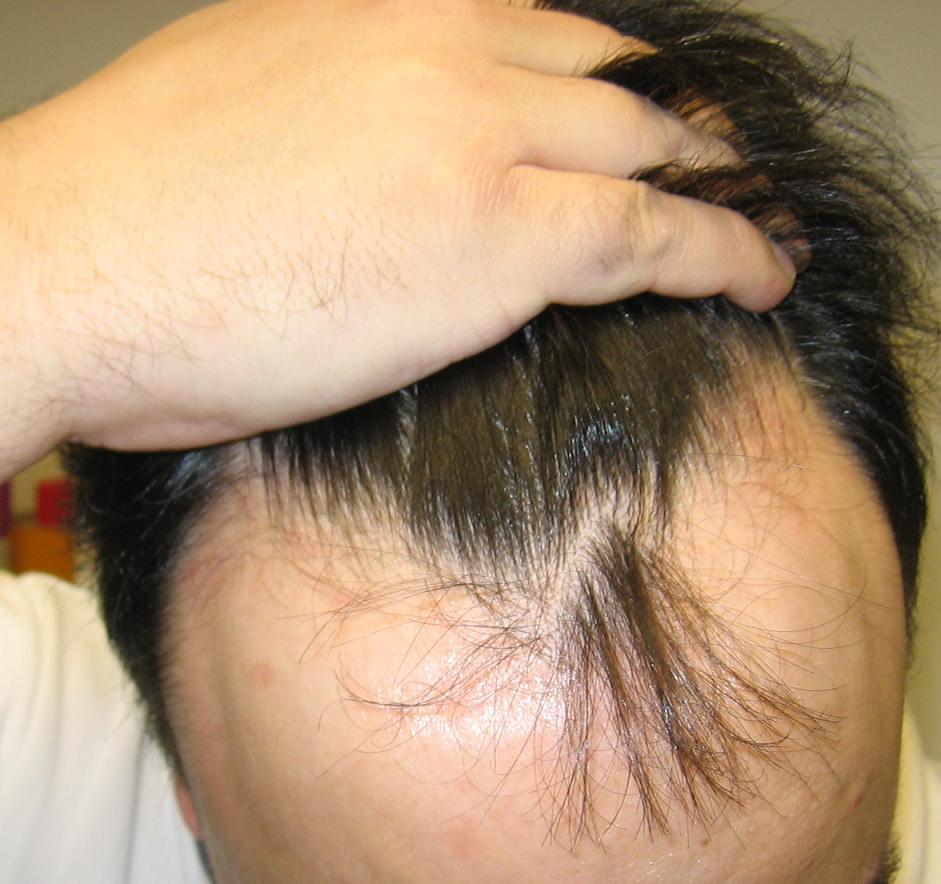
- This Androgenetic Alopecia affects women.
- It is similar to male pattern baldness, except that women can lose their hair in a different pattern than men.
- Hair loss in women is common, especially with age.
- Up to two-thirds of women experience hair loss after menopause.
- Minoxidil (Rogaine)
- Finasteride
- Platelet-Rich Plasma Treatment
- Hair Transplant
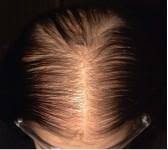
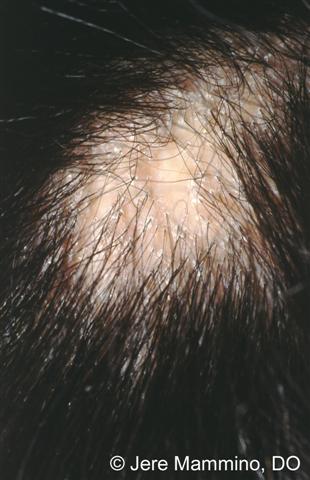
Scarring Alopecia
Hair loss due to scarring of the scalp is called scarring alopecia. Scarring can be due to a variety of causes. Traction alopecia over a period of time may lead to scarring and permanent hair loss. Similarly, trichotillomania (compulsive hair-plucking) can cause permanent scalp scarring over time. Injury to the scalp caused by physical trauma or burns may leave permanent scars and permanent hair loss. Diseases that may cause permanent hair loss due to scalp scarring include:
- Auto-immune conditions- lupus erythematosus and scleroderma
- Bacterial infections such as folliculitis, fungal infections, and viral infections such as shingles (Herpes Zoster).
A form of scarring alopecia may also occur in post-menopausal women, associated with hair follicles’ inflammation and subsequent scarring.
- Hair follicles are replaced with scar tissue (hence the name)
- In some cases, hair loss is without symptoms and can go unnoticed for long periods
- In other cases, hair loss is accompanied by burning, itching, and pain and is more progressive
- It can occur in men and women of all ages
- Lichen Planopilaris (one of the more well-known Scarring Alopecia) results in inflammation around affected hair follicles. It mostly affects middle-aged adults as distinct patches of hair loss.
Scarring alopecia, also known as cicatricial alopecia, is a type of hair loss characterized by permanent damage to hair follicles and the replacement of hair-bearing tissue with scar tissue. Its causes and risk factors can vary depending on the specific subtype of scarring alopecia, but common factors include:
Early diagnosis and prompt treatment are crucial to prevent further hair loss in cases of scarring alopecia, as hair follicles cannot regenerate once they are replaced by scar tissue.
- Medical treatments (such as corticosteroids, topical creams, and injections) are available to limit
The progression of Scarring Alopecia. Results are case-specific and are not guaranteed.
Alopecia Areata
This type of alopecia occurs as round or oval hair loss patches, most obvious on the scalp or in the eyebrows. Those who develop these round or oval hair loss areas can progress to total scalp hair loss (Alopecia Totalis). The cause of Alopecia Areata is unknown but commonly believed to be an auto-immune disorder. The most common treatment is steroids (cortisone is one form), either topically or by injection.
- People with this type of alopecia experience sudden or sometimes unrecognized falling out of hair in patches or spots
- Patches can vary in size from 1/8 inch to 4 inches in diameter; the affected areas are usually lighter in color due to inadequate blood supply to the area
Causes
Alopecia areata is an autoimmune disorder that causes hair loss, often in small, round patches on the scalp, although it can affect other body hair as well. The exact cause is not fully understood, but it is believed to involve a combination of genetic, environmental, and immune system factors. Risk factors and triggers include:
- Steroids
- Immunotherapy entails deliberately inducing an allergic response that triggers the growth of hair in bald areas.
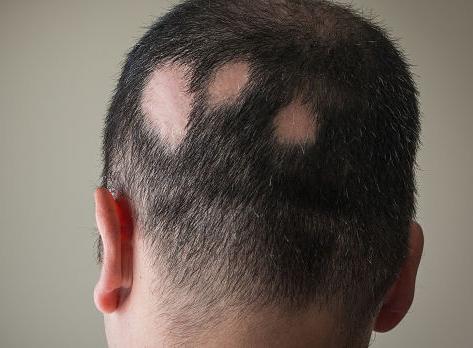
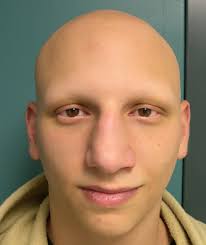
Alopecia Totalis
This refers to cases in which the scalp incurs complete hair loss. In an estimated 30% of patients, total hair loss occurs within six months after the disease’s onset.
It is an auto-immune disorder resulting in total hair loss, but on the scalp only. It is a condition intermediary between Alopecia Areata and Alopecia Universalis. Alopecia Totalis generally shows up in two types, the first being a relatively quick and complete hair loss in the head and the second being a slower type, which starts as a patchy loss (Alopecia Areata) and progresses to total hair loss in the scalp.
- Starts with small, round patches of hair loss and progresses until there is total scalp hair lossy
- The disease may at times lead to complete baldness of the scalp
- Alopecia Totalis is usually resistant to therapy.
Alopecia totalis is a severe subtype of alopecia areata characterised by complete hair loss on the scalp.
While the precise cause remains uncertain, it is generally attributed to autoimmune factors and genetic predisposition. Risk factors for alopecia totalis include:
- Autoimmune Factors: The condition is thought to result from an autoimmune response, where the immune system mistakenly attacks hair follicles.
- Genetics: A family history of alopecia areata or alopecia totalis increases the risk, suggesting a genetic component.
- Immune System Dysregulation: Abnormalities in the immune system, particularly involving T-cells, may contribute to the development of alopecia totalis.
- Stress: Emotional or physical stressors can exacerbate autoimmune responses, potentially triggering hair loss.
- Infections: Certain infections may be linked to the onset of alopecia totalis, although the relationship is not fully understood.
- Environmental Factors: Exposure to environmental triggers, such as toxins or allergens, may play a role.
Consulting with a dermatologist is essential for accurate diagnosis and tailored treatment plans.
- No reliable medical treatment; some medications that may work include Diphenylcyclopropenone, which is a topical drug that has been successful in treating Areata
- Hair Replacement Systems
Alopecia Universalis
This is the most advanced and rare type of alopecia in which there is a complete loss of hair all over the body.
- All body hair is lost.
- Areas like the nasal cavity, eyes, and scalp become very exposed to germs and microorganisms.
- People suffering from this condition need to guard themselves against sun exposure, bacteria, dust, etc.
Alopecia universalis is an extreme form of alopecia areata, an autoimmune condition where the immune system mistakenly attacks hair follicles, resulting in hair loss. In alopecia universalis, hair loss extends to the entire body, including eyebrows, eyelashes, and body hair.
The exact causes remain unclear, but several factors and risk factors are associated with its development:
- Autoimmune Factors: Alopecia universalis is primarily autoimmune in nature, suggesting a genetic predisposition. A family history of autoimmune disorders, like rheumatoid arthritis or type 1 diabetes, increases the risk.
- Genetics: Certain genetic markers are linked to a higher susceptibility to alopecia areata, including its universal form.
- Stress: Emotional or physical stress can trigger or exacerbate autoimmune responses, potentially contributing to alopecia universalis.
- Infections: Viral or bacterial infections may play a role in activating the autoimmune response that leads to hair loss.
- Immune System Abnormalities: Dysregulation of the immune system, specifically T-cells, is believed to be a key factor.
- Hormonal Changes: Hormonal fluctuations, particularly during puberty, pregnancy, or menopause, can influence the development of alopecia universalis.
- Environmental Factors: Exposure to certain environmental triggers, such as chemicals or allergens, may contribute to the onset of this condition.
- Medications: Some medications, particularly those affecting the immune system, can trigger alopecia universalis as a side effect.
It's important to note that alopecia universalis is a complex condition with a multifactorial aetiology. Treatment options, including corticosteroids, immunosuppressive therapies, and topical medications, aim to manage the autoimmune response and stimulate hair regrowth, but results can vary among individuals. Consultation with a dermatologist or immunologist is crucial for proper diagnosis and personalised treatment.
- There is no known cure for Alopecia Universalis. Intralesional Corticosteroid injections may help.
- The Hair Replacement System is the only option.

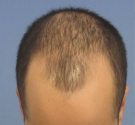
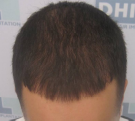
Diffuse Alopecia
Diffuse alopecia – also known as Alopecia Areata Incognita, is a rare form of alopecia and affects primarily young males, and the hair loss on the head is radical and sudden.
Diffuse alopecia, a condition characterised by widespread hair thinning or hair loss across the scalp can result from various underlying causes and risk factors. Understanding these factors is essential for effective diagnosis and management.
- Telogen Effluvium: One common cause of diffuse alopecia is telogen effluvium, where an increased number of hair follicles enter the resting (telogen) phase prematurely due to physical or emotional stress, illness, surgery, or significant weight loss.
- Androgenetic Alopecia: Diffuse hair loss can also be an atypical presentation of androgenetic alopecia (male or female pattern baldness). Genetic factors, hormonal imbalances, and age contribute to this condition.
- Medical Conditions: Underlying medical conditions such as thyroid disorders (hypothyroidism or hyperthyroidism), autoimmune diseases (e.g., lupus), and nutritional deficiencies (iron, zinc, and biotin) can lead to diffuse alopecia.
- Medications: Certain medications, including chemotherapy drugs, anticoagulants, and retinoids, are known to cause hair loss as a side effect.
- Diet and Lifestyle: Poor nutrition, crash diets, or extreme weight loss can lead to diffuse hair thinning. Smoking and excessive alcohol consumption may also contribute.
- Hair Care Practices: Excessive use of heat styling tools, harsh hair treatments, tight hairstyles (traction alopecia), or frequent use of chemical products can damage hair follicles, leading to diffuse alopecia.
- Stress: Chronic stress and anxiety can disrupt the hair growth cycle, contributing to diffuse hair loss.
- Hormonal Changes: Hormonal fluctuations during pregnancy, postpartum, menopause, or the discontinuation of birth control pills can trigger diffuse alopecia.
Identifying the specific cause of diffuse alopecia requires a thorough medical evaluation by a healthcare professional. Once the underlying factor is determined, appropriate treatment or management strategies, such as addressing the root cause, dietary changes, or medical therapies, can be implemented to help restore hair health.
- Finasteride
- Platelet-Rich Plasma Treatment
- Low-Level Laser Treatment
Telogen Effluvium
When hair follicles are pushed prematurely in the hair growth cycle’s resting stage, the resulting hair loss is categorized as Telogen Effluvium.
- Form of hair loss where more hair than usual falls out, causing the hair to thin in general rather than in patches
- Head hair does feel thinner, but complete hair loss is unlikely. Other parts of the body are generally not affected.
- Condition is temporary, and the hair does start growing back after around six months in most cases
- Telogen effluvium can be caused by the following:
- Extreme emotional or physical stress
- Intense physical stress
- Hormonal changes
- Chronic diseases such as cancer
- Dietary changes or crash dieting
- Severe infection
- Certain medications
Telogen effluvium is a temporary and diffuse hair loss condition characterised by a significant shedding of hair. Several risk factors can trigger telogen effluvium, including severe stressors like physical trauma, surgery, or emotional stress. Medical conditions such as thyroid disorders, anaemia, and chronic illnesses can also contribute to this hair loss condition. Nutritional deficiencies, crash diets, and rapid weight loss are additional risk factors. Medications, particularly those causing side effects like hair loss, are common culprits. Hormonal changes due to childbirth, menopause, or stopping birth control pills can trigger telogen effluvium as well. Identifying and addressing the underlying cause is key to managing this condition effectively.
- Minoxidil
- Platelet-Rich Plasma Treatment
- High Protein Diet
- Complete Hair Growth Supplements with a blend of biotin, vitamin C, zinc, iron, marine extracts.
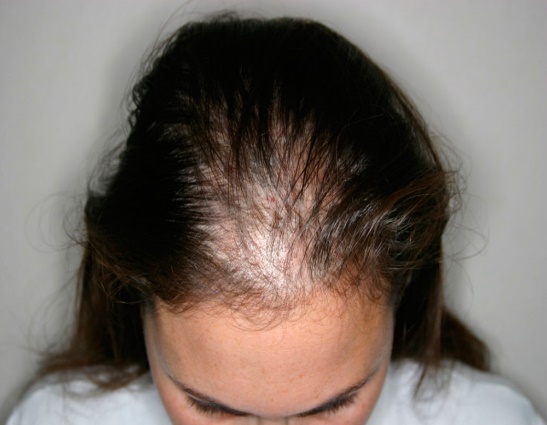
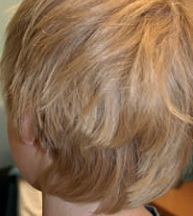
Traction Alopecia
This alopecia is usually caused due to excessive pulling or tension on hair shafts as a result of certain hairstyles.
- The most common balding disorder among young women and girls with highly textured hair.
- Baldness occurs when the hair is pulled too tight and is pulled out of the follicle, taking out the hair root and the bulb.
- Destroying the hair shaft may cause white bumps and pus, or scaling may occur around the affected area.
The most common risk factor is tight hairstyles such as braids, cornrows, weaves, and tight ponytails. Excessive use of hair extensions and hair accessories that pull on the hair can also lead to traction alopecia. Frequent use of hot styling tools, chemical treatments, and improper hair care practices can weaken the hair shaft, making it more susceptible to damage. Additionally, individuals with naturally fine or fragile hair are at a higher risk of developing traction alopecia. Proper hair care and avoiding tight hairstyles are essential to prevent this condition.
- Hair transplant is the only permanent solution.
Triangular Alopecia
Triangular alopecia, also known as temporal triangular alopecia or congenital triangular alopecia, is a rare and non-scarring form of hair loss that typically occurs in a well-defined triangular or oval-shaped area near the temples or frontal hairline. This condition primarily affects children and young adults but can persist into adulthood. While the exact cause of triangular alopecia remains unclear, it is believed to be a genetic disorder, as it often runs in families.
Loss of hair occurs in the temporal areas that sometimes begin in childhood. Hair loss may be complete, or a few fine, thin diameter hairs may remain. The cause of Triangular Alopecia is not known, but the condition can be treated medically or surgically.
Risk factors for triangular alopecia include a family history of the condition and the presence of other hair or scalp abnormalities. Clinical progression of this condition usually begins in childhood, with hair thinning or bald patches appearing near the temples. Over time, the affected area may expand, leading to more noticeable hair loss.
Treatment options for triangular alopecia are limited, and many individuals may choose to manage the condition with hairstyling techniques or hairpieces to conceal the affected area. In some cases, topical medications like minoxidil or hair transplantation may be considered to stimulate hair growth. Consulting a dermatologist can provide personalised guidance on managing triangular alopecia.
Diagnosis of Alopecia
Alopecia, often referred to as hair loss, is a condition that affects millions of individuals worldwide. It can manifest in various forms, each with its own distinct characteristics and diagnostic methods.
Diagnosis for Different Types of Alopecia:
- Alopecia Areata: This form presents as round or oval bald patches and is often an autoimmune disorder. Diagnosis typically involves a physical examination and, occasionally, a scalp biopsy to confirm.
- Alopecia Totalis: In this subtype, hair loss encompasses the entire scalp. Diagnosis relies on clinical evaluation and may include blood tests to rule out underlying causes.
- Alopecia Universalis: This is an extreme variant where hair loss extends across the entire body. Diagnosis is primarily clinical, with consideration given to autoimmune factors.
- Androgenetic Alopecia: Commonly known as male or female pattern baldness, diagnosis is straightforward through a visual examination and medical history review.
- Diffuse Alopecia Areata: In this atypical presentation, hair loss occurs diffusely across the scalp, making diagnosis challenging. It often resembles other forms of hair loss and may require a scalp biopsy for confirmation.
- Cicatricial Alopecia (Scarring Alopecia): Diagnosis involves clinical assessment, often aided by a scalp biopsy to examine the presence of scar tissue replacing hair follicles.
- Ophiasis Alopecia: Typically characterised by hair loss in a wave-like pattern along the scalp's periphery (ophiasis), diagnosis primarily involves a clinical examination.
- Traction Alopecia: Commonly caused by tight hairstyles, diagnosis relies on evaluating hair loss patterns and patient history.
- Triangular Alopecia: This condition results in triangular-shaped hair loss near the temples and can be diagnosed through clinical examination.
Coping with Alopecia
Alopecia can be emotionally challenging, impacting self-esteem and body image. Coping strategies involve seeking support from friends, family, or support groups, as well as exploring hairpieces, wigs, or creative hairstyles to boost confidence. Embracing one's unique appearance and practising self-care are essential aspects of managing the emotional toll of alopecia.
Living with Alopecia
Living with alopecia means adapting to a changing appearance and managing potential physical discomfort. It's important to prioritise self-acceptance, seek professional advice, and explore treatment options to address individual needs and preferences.
Conclusion
Alopecia encompasses a spectrum of conditions that can affect individuals of all ages and backgrounds. Understanding the type, seeking appropriate diagnosis, and exploring treatment options are crucial steps in managing alopecia effectively. Coping with the emotional impact and seeking support can make a significant difference in one's journey with hair loss. Ultimately, embracing individuality and self-acceptance are key to living a fulfilling life with alopecia.
Frequently Asked Questions
What are the common types of alopecia?
Common types of alopecia include Alopecia Areata, Androgenetic Alopecia (male and female pattern baldness), Scarring Alopecia, Traction Alopecia, and Telogen Effluvium.
Is there a cure for alopecia?
There is no universal cure for all types of alopecia. Treatment options vary depending on the specific type and may include medications, surgical procedures, or lifestyle changes to manage symptoms and promote hair regrowth.
Can alopecia be hereditary?
Maintaining a balanced diet, managing stress, avoiding harsh hair treatments, and quitting smoking can support overall hair health. Specific lifestyle changes may be recommended based on the type and cause of hair loss.
Are there lifestyle changes that can help with hair loss?
Yes, alopecia can be hereditary. Genetic factors play a significant role in conditions like Androgenetic Alopecia, where family history is a key risk factor.
What are the emotional effects of alopecia?
Alopecia can have profound emotional effects, including reduced self-esteem and body image concerns. Individuals may experience anxiety, depression, or social withdrawal. Seeking emotional support, counselling, and practising self-acceptance are essential in coping with these emotional challenges.